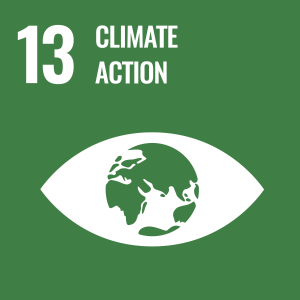South Asia is a geographically complex region, with the highest mountain of the Himalayas up north and the lowland around the Bay of Bengal down South. Such a profile causes the region to be threatened by all sorts of geological and hydro-meteorological hazards such as floods (including glacial lake outburst floods (GLOFs)), landslides, droughts, cyclones, earthquakes, heat waves, avalanches, and tsunamis, and the region is getting impacted by these events more often and more severely due to climate change. The major disaster events in the region, amongst the others, were: The Indian Ocean Tsunami in 2004, Kashmir Earthquake in 2005, Koshi River Flooding in 2008, the 2010 GLOF in Pakistan, as well as numerous tropical cyclones hitting the coasts of Bangladesh, India, and Thailand each year. It is a region that is highly vulnerable to natural disasters, with Bangladesh being the most vulnerable country in the region and followed by India and Pakistan. These three countries cover the vast majority of South Asia’s population and lie in very high-risk zones where seismic and hydro-meteorological hazards are active.
Apart from geographical factor, human factor is another major reason causing South Asia’s vulnerability to disaster. The region is home to 1.8 billion people of which 70% of them live in poverty. Such a high population density with high rate of poverty, together with exposed population from fast urbanization and lack of preparedness due to capacity and resource shortage, can be attributed to the vulnerability to disasters. Economic vulnerability analysis shows that India, Pakistan, and Bangladesh exhibit the largest losses because of large exposure to high-level hazards.
In order to adapt to the worsening hydro-meteorological disasters due to climate change, South Asian and Southeast Asian countries like Thailand have each introduced their own national disaster management policy in the past decade. In formulating the policies, they have adopted the Sendai Framework for Disaster Risk Reduction 2015-2030 endorsed by the United Nations (UN) General Assembly in 2015, with an aim to substantially reduce the human and social impact of disasters around the globe.
Besides establishing national disaster risk reduction (DRR) policies, the South Asian Association for Regional Cooperation (SAARC) member states have signed a SAARC Action Plan on Climate Change that recommends cooperation on climate risk governance. The Action Plan addresses both natural and climate-related disasters, and the SAARC has identified several areas that require attention: climate adaptation and mitigation, transfer of technology, awareness raising and education, management of risks and impacts, and capacity building.
In spite of the attempted efforts, disaster governance in South Asia and Southeast Asia is still at its initial phase as the governments of these nations are starting to pay attention to managing the inevitably more frequent and intense hydro-meteorological disasters. As a result, although the disaster management policies and institutional structures in these regions are sound on paper, there is still much to be desired in practice. This publication analyzes the disaster governance of each South Asian country and Thailand in terms of current policies and institutional structures, as well as offering recommendations in amending the situation and further enhancing disaster resilience.




